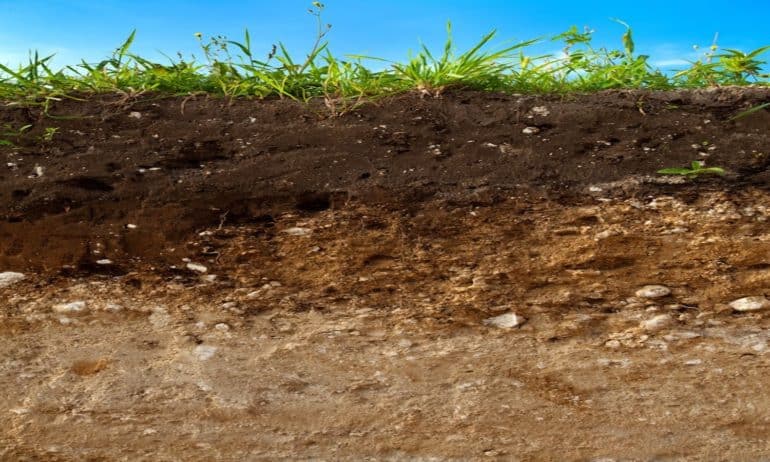The U.N. Food and Agriculture Organization (FAO) asserts that “land and soils constitute the foundation for sustainable agricultural development, essential ecosystem functions, and food security. They are key to sustaining life on Earth.” Many of the U.N. Sustainable Development Goals (SDGs) are closely related to land and soils. Recent research and initiatives undertaken by governments, scientific institutes, and nonprofit organizations are working towards these SDGs through sustainable land management and soil conservation.
The SDGs represent a global set of goals to guide governments, aid organizations, the private sector, and NGOs along the path of sustainable development. There are 17 goals in total, and each goal has specific targets to be achieved by the year 2030. SDG 15 is directly related to soil and land and aims to “protect, restore, and promote sustainable use of terrestrial ecosystems, sustainably manage forests, combat desertification, halt and reverse land degradation, and halt biodiversity loss.”
According to the FAO, the current rate of soil degradation is compromising sustainable agriculture, food security, and vital ecosystem services, both now and for future generations. FAO Deputy Director-General, Maria-Helena Semedo, states that all of the world’s topsoil could erode within the next 60 years if current rates of degradation continue. Other U.N. and government officials are calling for stronger management of the planet’s soils, stating that this critical natural resource could “make or break” climate change response efforts.
According to the 2015 U.N. report, Status of the World’s Soil Resources, the loss of soil resources and functions can be avoided if more sustainable practices are promptly implemented. Thankfully, there are many organizations promoting action towards sustainable soil management, helping to increase soil fertility and biodiversity, mitigate against climate change, and reverse land degradation and desertification. Food Tank is highlighting innovative soil projects from around the globe that are addressing SDG 15 and building evidence on the benefits of sustainable soil practices.
The Biome of Australian Soil Environments (BASE) is the first program to map soil biodiversity at a continental scale. Working with Indigenous Australian custodians and landowners, researchers sampled soils from more than 1,500 sites across Australia and the Antarctic, spanning deserts, agricultural lands, the tropics, alpine regions, and coastal areas. By measuring and modeling the biological and functional diversity of Australia’s soil, BASE provides important data to achieve sustainable outcomes for Australian agriculture and the environment.
The Global Soil Biodiversity Initiative (GSBI) is a central forum that brings together scientists and policymakers to synthesize data and formulate plans and policies that address the loss and maintenance of soil biodiversity. GSBI holds a Global Soil Biodiversity Conference, which promotes international collaborations across a range soil sustainability topics, such as sustainable agriculture and curbing climate change. GSBI has also developed the Global Soil Biodiversity Atlas, a reference publication for policymakers, researchers, and the general public covering all aspects soil biodiversity, from the soil habitat to policy, education, and outreach efforts.
The 4/1000 Initiative, launched by the French government in 2015, promotes an innovative model for mitigating climate change through increasing soil organic carbon. The aim of the initiative is to annually increase soil organic carbon in agricultural soils by 0.4 percent to help curb greenhouse gas emissions. The Initiative promotes sustainable agricultural farming techniques which combat soil erosion and improve soil health, such as agroecology, agroforestry, conservation agriculture, or landscape management. More than 30 countries and numerous international organizations have committed to a voluntary action plan to maintain and enhance soil carbon stock under the Initiative.
The Global Soil Partnership (GSP) is an initiative of FAO to improve the governance and promote sustainable management of soils across the globe. In 2017, a new FAO/GSP project was launched in seven Latin American countries to build their national soil information system to monitor the health state of their soils. One of the main objectives is to measure the organic carbon contained in their soils so that countries can develop a climate change adaptation and mitigation strategy. The project seeks to strengthen local decision making and advise farmers and land users on how to restore degraded soil, tackle environmental challenges, increase yields, and raise agricultural productivity.
The African Forest Landscape Restoration Initiative (AFR100) is a continent-wide effort to bring 100 million hectares of deforested and degraded landscapes into restoration by 2030. AFR100 uses a Forest Landscape Restoration (FLR) approach to implement practices that restore an agreed balance of ecological, social, and economic benefits of forests and trees. Through forest restoration, AFR100 aims to build resilient African landscapes that reduce desertification, improve soil fertility, and enhance agricultural productivity and food security. Twenty-two participating countries have already committed to restoring more than 75 million hectares.
The Economics of Land Degradation (ELD) Initiative is a global initiative which aims to increase political and public awareness of the economic costs of land degradation and the economic benefits of investing in sustainable land management. ELD produces detailed studies on sustainable land management practices that prevent the loss of natural capital, secure livelihoods, preserve ecosystem services, combat climate change, and address food, energy, and water security. This information then serves as the basis for drafting relevant policy recommendations for national governments and key decisionmakers in the private and public sectors.
These initiatives are bringing together policymakers, land users, farmers, the private sector, civil society, and academics to enhance soil and land management practices and help turn the sustainable vision of SDG 15 into a reality.







